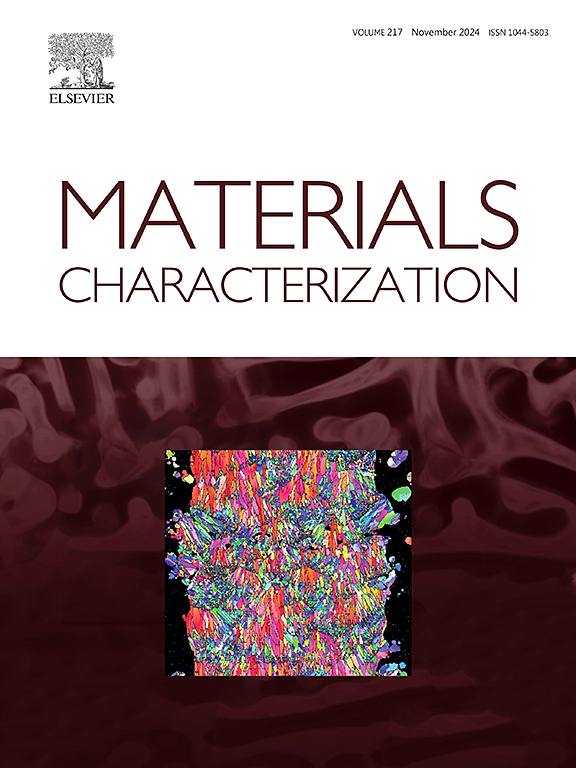Effects of phase angle and dwell time on the thermo-mechanical fatigue behavior of an advanced turbine disk alloy
IF 4.8
2区 材料科学
Q1 MATERIALS SCIENCE, CHARACTERIZATION & TESTING
引用次数: 0
Abstract
In this study, the effects of phase angle and dwell time on thermal-mechanical fatigue (TMF) of a new-generation nickel-based powder metallurgy superalloy FGH4108, used for aeroengine turbine disks were studied along with detailed micro-characterization of fracture features and deformation substructures. The results indicate that the high density of dislocations and stacking faults (SFs) formed in the in-phase TMF tests cause cyclic softening during tensile half-cycle and cyclic hardening during compressive half-cycle. For the out-of-phase TMF tests, the low density of dislocations and SFs which is associated with dislocation annihilation at the highest temperature but the minimum applied mechanical strain leads to cyclic softening during tensile half-cycle and insignificant cyclic hardening during compressive half-cycle. The combined effect of high temperature and high applied mechanical strain in the in-phase TMF tests promote grain boundary deformation and oxidation, leading to mixed transgranular and intergranular crack initiation and propagation, especially when a dwell is introduced at the peak temperature and load, while cracks mainly are transgranular in the out-of-phase TMF tests. The TMF life under the investigated conditions is predominantly influenced by the crack propagation process, the much lower maximum tensile stress in the in-phase TMF tests contribute to much longer life of the in-phase non-dwell test compared with that of the out-of-phase TMF tests.
相位角和停留时间对先进涡轮盘合金热-机械疲劳行为的影响
研究了用于航空发动机涡轮盘的新一代镍基粉末冶金高温合金FGH4108的相位角和停留时间对其热机械疲劳(TMF)的影响,并对断裂特征和变形子结构进行了详细的微观表征。结果表明:在同相TMF试验中形成的高密度位错和层错导致了拉伸半周期的循环软化和压缩半周期的循环硬化;对于非相TMF试验,在最高温度下与位错湮灭相关的低密度位错和SFs导致拉伸半周期的循环软化和压缩半周期的不显著循环硬化。在同相TMF试验中,高温和高机械应变的共同作用促进了晶界变形和氧化,导致跨晶和跨晶混合裂纹的萌生和扩展,特别是在峰值温度和峰值载荷处引入驻留时,而在非同相TMF试验中,裂纹主要是跨晶裂纹。研究条件下的TMF寿命主要受裂纹扩展过程的影响,与非相TMF试验相比,相内TMF试验的最大拉应力要低得多,因此相内非停留试验的寿命要长得多。
本文章由计算机程序翻译,如有差异,请以英文原文为准。
求助全文
约1分钟内获得全文
求助全文
来源期刊

Materials Characterization
工程技术-材料科学:表征与测试
CiteScore
7.60
自引率
8.50%
发文量
746
审稿时长
36 days
期刊介绍:
Materials Characterization features original articles and state-of-the-art reviews on theoretical and practical aspects of the structure and behaviour of materials.
The Journal focuses on all characterization techniques, including all forms of microscopy (light, electron, acoustic, etc.,) and analysis (especially microanalysis and surface analytical techniques). Developments in both this wide range of techniques and their application to the quantification of the microstructure of materials are essential facets of the Journal.
The Journal provides the Materials Scientist/Engineer with up-to-date information on many types of materials with an underlying theme of explaining the behavior of materials using novel approaches. Materials covered by the journal include:
Metals & Alloys
Ceramics
Nanomaterials
Biomedical materials
Optical materials
Composites
Natural Materials.
 求助内容:
求助内容: 应助结果提醒方式:
应助结果提醒方式:


